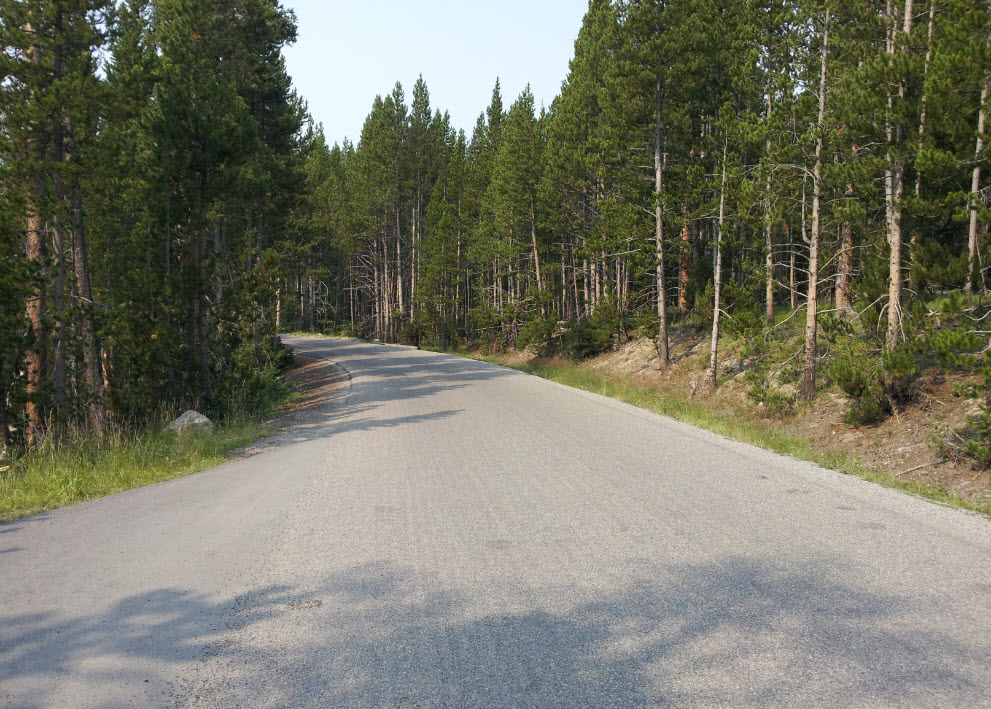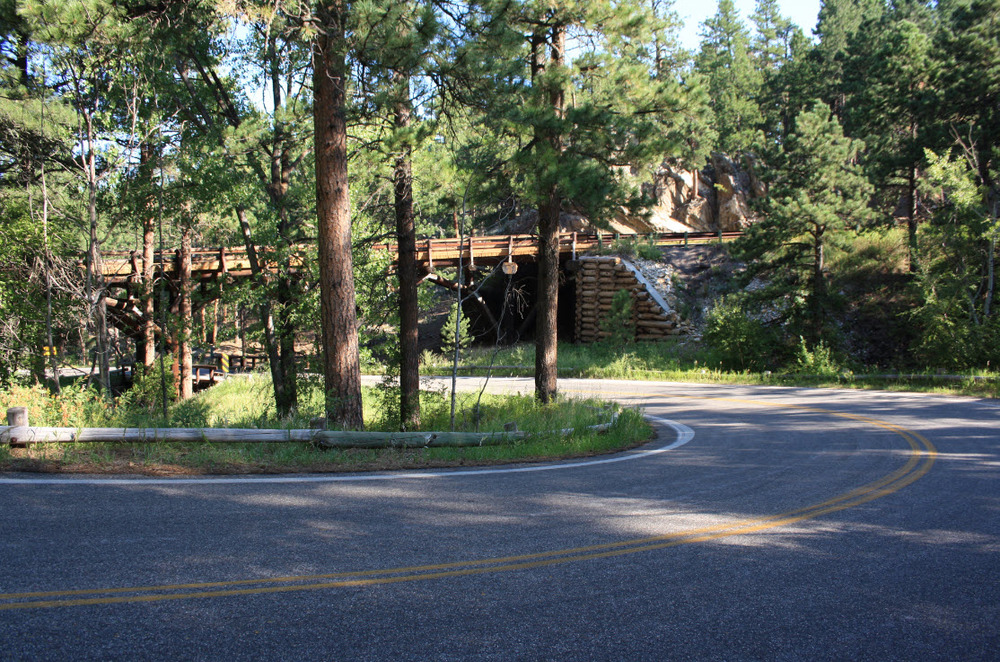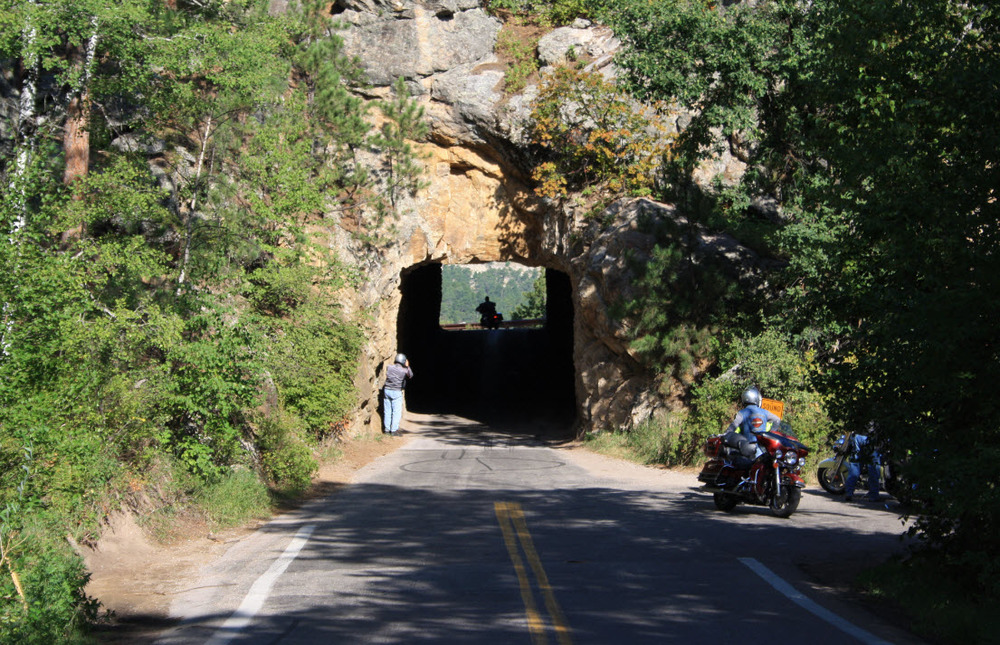Roads, Streets, STROADS and Park Roads
Time is running out on our fundraising goal for holding a series of Curbside Chats across Pennsylvania. We would really love to make this trip happen and share the Strong Towns message across the entire state. If you are a PA-based organization, an individual or a local government that wants to make this happen in your community, help us reach our goal and we'll make it happen. We have only two weeks left - please do what you can.
- - - -
I just returned from a great week out west with my family. We had a stop in the Black Hills then moved on to Yellowstone and finally Grant Teton. It was a trip we had been waiting for our two daughters to get a little older to make. With the youngest heading to "Kinder-camp" this week and the oldest turning eight on Friday, the time had come. It was worth the wait.
Last year I did a TED speech about The Important Difference between a Road and a Street. The 15 minute talk has been watched nearly 14,000 times and I've received a lot of really positive feedback on it (thank you, everyone). While I feel that it, along with a lot of my other writing, has done an adequate job explaining the difference, I've known for a long time that there was something missing. I knew exactly what it was, but I couldn't explain it in the simple terms that I had done with roads and streets. I now think I can.
To review, a road is an efficient connection between two places. It is high speed and safe, which implies that it has limited access (intersections are inherently unsafe at high speeds) and highway geometries. It is essentially a replacement for the railroad which was, as its name suggests, a road on rails.
In contrast, streets create a platform for capturing value. A properly designed street will maximize the value of the adjacent development pattern in ratio to the infrastructure investment within the public realm. To do this, auto traffic will be slow and will (equally) share space with other modes of transport, including pedestrians, bikers and transit alternatives.
A STROAD is a street/road hybrid. And yes, I have often called it the "futon of transportation alternatives". Where a futon is an uncomfortable couch that also serves as an uncomfortable bed, a STROAD is an auto corridor that does not move cars efficiently while simultaneously providing little in the way of value capture. Anytime you are driving between 30 and 50 miles per hour, you are likely on a STROAD, which has become the default option for American traffic corridors. Cities wishing to be Strong Towns should have a active policy for reducing the amount of STROADS within the community.
How is this done? For most cities, the corridors that should be roads and the areas that should have a network of streets are fairly easy to identify. Roads begin on the periphery and provide a connection to adjacent communities. Streets are places where neighborhoods have the capacity to mature. The long term strategy for roads must be to improve the efficiency of the connection by first reducing access and ultimately providing expansion (transit, additional capacity, etc..). The long term strategy for streets is to develop the economic, regulatory and design framework to allow the adjacent areas to mature. (For an example of this framework, see our series From the Mayor's Office Part 1, Part 2 and Part 3 or listen to the podcast of the fictional mayor's address.)
Here's where I get to the part I've had a tough time explaining. In the typical American city, once the roads and streets have been identified, there is still a lot of STROAD left over. What happens to all of that?
I've tried to explain that these are areas where, to improve the public's return-on-investment, we actually need to look at contracting the public's obligation. In other words, if these neighborhoods can't mature (increase in value) and they currently don't have enough value to justify the enormous public obligation for infrastructure maintenance, the STROADS need to be scaled back. Turning paved streets to gravel and narrowing lanes; that kind of thing.
I've called these "country roads" in the past to explain how they operate. People living on one of these would be out of town. They would thus need to drive along their country road to get to town where they could access destinations or get on a high speed road to another place. There would be no direct connection to the highway (road). This would not be a fast and efficient trip, but the place they are living is somewhat remote and that kind of comes with the turf (or it would if people actually paid for what they got and/or got what they were willing to pay for).
The description "country road" is not very satisfying, especially to someone applying it to a strictly suburban setting. What does this look like and, more importantly for some, what is the standard for building it?
Driving through some beautiful national parks last week it became clear to me. The description I've been looking for is, simply put, a park road. If you look at a park road, you will see something that, while engineered, is generally rather modest in its design and construction. They are built with the contour of the land, are designed for slow speed and low impact. While you would certainly have to deal with issues of stormwater and snow removal, my engineering instincts tell me that parks roads would generally be cheaper to construct and last just as long as the STROADS we build today. (If you want to argue with that, that's what the comment section is for.)
 A park road in Yellowstone National Park, August 2012.
A park road in Yellowstone National Park, August 2012.
The great thing about using this label is that there are standards for park roads. The first publication by the U.S. Government on them came out in 1968 with an update in 1984 and another version released this past June. Here's some of the differences between park roads and roads, streets and STROADS:
1. Park roads were planned to reach the principal features of the park rather that be the most direct route between two points.
2. Park roads were designed to fit the topography of a park rather than to conform to the standards of gradient, curvature, and alignment used in statewide or nationwide applications. The roads lay gently on the land rather than cut through it.
3. Park roads were designed to be low speed roads so that visitors could see and enjoy the park. Their design as low speed roads allowed easier fit into the landscape and reduced the amount of construction scars.
More information is available on the National Park Service website.
 A park road in Custer State Park, August 2012.
A park road in Custer State Park, August 2012.
Now park roads through suburbia won't be lined with trees, wildlife and monuments, but there is no reason why this approach could not be immediately adapted to the construction, maintenance and retrofit of America's financially unproductive places. The only resistance I envision (because residents of suburbia would generally prefer more modestly-sized streets, although they may balk at the longer drive times) is from engineers. They will, without justification, put forth the notion that park roads would be dangerous.
So how dangerous are park roads? I don't know, but Yellowstone has over 3 million visitors per year and I would suspect that almost all arrive and travel by car. I found this article discussing bear attacks that had statistics suggesting fewer than three auto-related deaths per year.
In Yellowstone, of the 61 fatalities that occurred in the park from 1998 to 2006, 23 were due to either heart attacks or diabetes.
Twenty deaths within Yellowstone during those years were due to motor vehicle accidents, but the park-reported numbers do not include people who transported out of the park after an accident who later died of their injuries once off-site, Miller said.
Although the total number of fatalities that occur every year in the parks is generally low, Gaumer said, suicides are another common cause of deaths.
Despite the difficult terrain, steep slopes and random stops, very few people die on park roads. There is one reason for that: low speeds.
 A park road in Custer State Park, August 2012.STROADS are inherently unsafe as they combine moderate to high speed traffic with turning movements, intersections and sudden stops. They are also very expensive to build and maintain. In contrast, park roads are safe and, I firmly believe, much more affordable. To build a Strong Town, we need to adapt the park road approach to STROADS that cannot be turned into either roads or streets.
A park road in Custer State Park, August 2012.STROADS are inherently unsafe as they combine moderate to high speed traffic with turning movements, intersections and sudden stops. They are also very expensive to build and maintain. In contrast, park roads are safe and, I firmly believe, much more affordable. To build a Strong Town, we need to adapt the park road approach to STROADS that cannot be turned into either roads or streets.
If you would like more from Chuck Marohn, check out his new book, Thoughts on Building Strong Towns (Volume 1), now available in paperback, Kindle and Nook. You can also chat with Chuck and many others about implementing a Strong Towns approach in your community by joining the Strong Towns Network. The Strong Towns Network is a social platform for those working to make their community a strong town.
